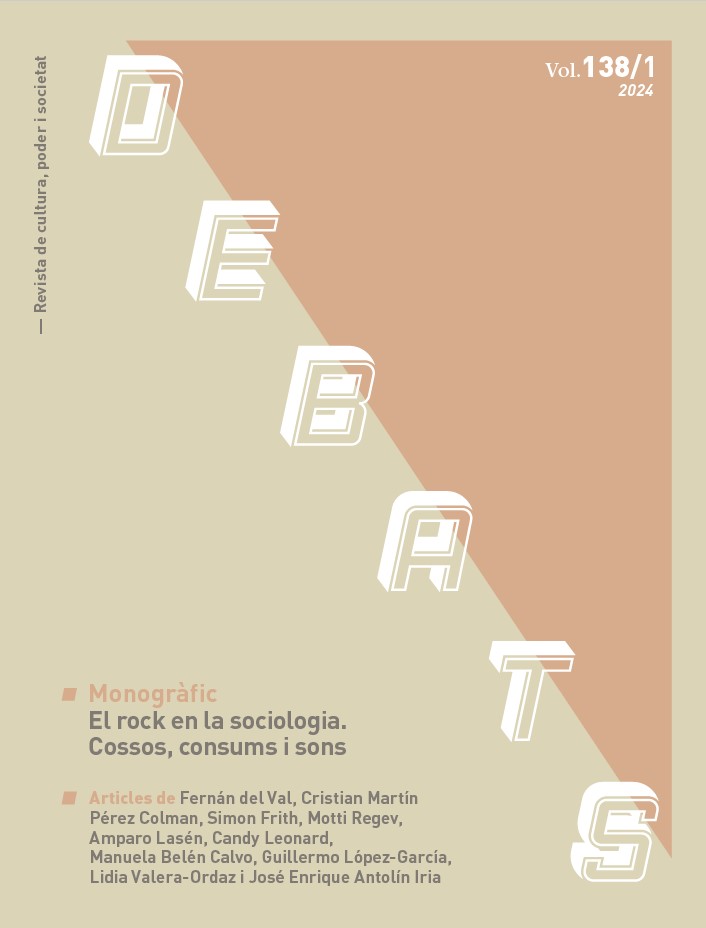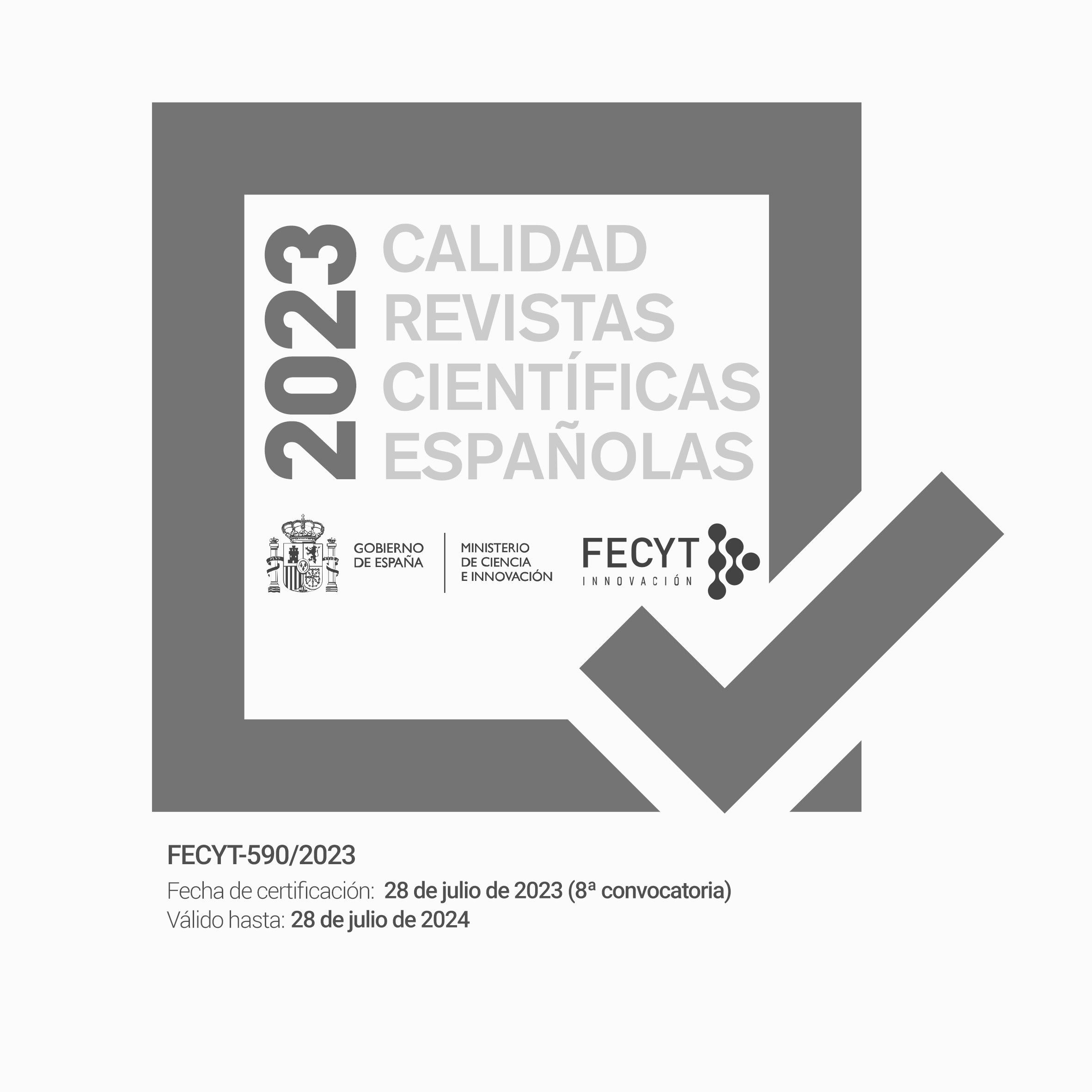Not just cock rock: Bodi and affective male experiences in dancing rock
DOI:
https://doi.org/10.28939/iam.debats-138-1.3Abstract
This article suggests that, after over half a century during which successive generations of fans
in countries around the world have embraced multiple local and global genres and styles of pop-rock
music, individuals in many countries have became equipped with sonic-musical knowledge that enables
them to immediately, spontaneously and intuitively decipher amplified, electric, electronic and
manipulated musical soundscapes. Possession of this type of corporeal knowledge, and its routine
embodiment by individuals across many different parts of the world amounts to a mundane
manifestation of current culture, or rather a commonplace musical cosmopolitanism. As it unfolds,
this article discusses the notion of musical cosmopolitanism and the meaning of pop-rock as an
aesthetic culture. It also develops a classification of music-related knowledge into three major
categories – discursive, musical and sonic knowledge – before focusing on the third type.
Downloads
References
Ahmed, S. (2019). Fenomenología queer. Orientaciones, objetos, otros. Barcelona: Bellaterra.
Azpiazu Carballo, J. (2017). Masculinidades y feminismo. Barcelona: Virus editorial.
Bataille, G. (1979/1957). El erotismo. Barcelona: Tusquets.
Butler, J. (1990). El género en disputa. El feminismo y la subversión de la identidad. Barcelona: Paidós.
Chadwick, R. (2017). Embodied methodologies: challenges, reflections and strategies. Qualitative Research. 17(1), 54-
74. https://doi.org/10.1177/1468794116656035.
Dyer, R. (2021/1979). En defensa de la música disco. Resonancias, 25(48), 167-174. https://doi.org/10.7764/res.2021.48.9.
Esteban, M. L. (2020). La antropología y el poder de lo erótico. AIBR. Revista de Antropología Iberoamericana, 15(3),
557-581. https://doi: 10.11156/aibr.150307.
Fast, S. (1999). Rethinking Issues of Gender and Sexuality in Led Zeppelin: A Woman's View of Pleasure and Power in
Hard Rock. American Music, 17(3), 245-299. https://doi.org/10.2307/3052664
Foster, S.L. (1998). Choreographies of Gender. Signs, 24(1), 1-33.
Frith, S., i McRobbie, A. (1978). Rock and Sexuality. Screen Education, 29, 3-19.
García, A. (2010). Exponiendo hombría. Los circuitos de la hipermasculinidad en la configuración de prácticas sexistas
entre varones jóvenes. Revista de Estudios de Juventud, 89, 59-78.
Gilbert, J. (2006). Dyer and Deleuze: Post-Structuralist Cultural Criticism. New Formations. A Journal of Culture, Theory,
Politics, 38, 109-127.
Gilbert, J., i Pearson, E. (1999). Discographies. Dance music and the politics of sound. Londres: Routledge.
Goffman, E. (1987). Gender Advertisements. Nova York: Harper & Row Publishers.
Grosz, E. (1994). Volatile Bodies. Towards a corporeal feminism. Bloomington: Indiana University Press.
Hamilton, M. aka Materia Hache (2019). El mapa del porvenir: una invitación a la fiesta del sótano a las azoteas: una
línea de fuga del control y del disciplinamiento. En F. Vila i J. Sáez (eds.), El libro del buen mor. (236-267). Madrid:
Ayuntamiento de Madrid.
Kimmel, M. (1994). Masculinity as Homophobia. Fear, Shame and Silence in the Construction of Gender Identity.
En H. Brod i M. Kaufman (eds.), Theorizing Masculinities. (119-140), Thousand Oaks: Sage Publications. https://
dx.doi.org/10.4135/9781452243627.n7
Kosofsky-Sedgwick, E. (1993). Tendencies. Durham: Duke University Press.
Lasén, A. (2003). Notas de felicidad extrema. La experiencia musical dance. Papeles del CEIC, 9. https://doi.org/10.1387/
pceic.12083
Lawrence, T. (2006). In Defence of Disco (Again). New Formations. A Journal of Culture, Theory, Politics, 38, 128-146.
Leibetseder, D. (2012). Queer tracks: Subversive strategies in rock and pop music. Londres: Taylor and Francis.
Leste, E. (2020). Ambivalencia y transformaciones de las fiestas Neobakalas. Disparidades. Revista de Antropología, 75(2):
e020. https://doi.org/10.3989/dra.2020.020
López Castilla, T. (2015). Música electrónica y cultura de club: un estudio postfeminista de la escena española. Tesis de
doctorado. La Rioja: Universidad de la Rioja. https://dialnet.unirioja.es/servlet/tesis?codigo=46122.
López Castilla, T. (2018). El perreo queer del lesbian reguetón. En A. M. Botella Nicolás i R. Isusi Fagoaga (eds.), Músicas
populares, sociedad y territorio: sinergias entre investigación y docencia. (99-208). València: Universitat de València.
Lorde, A. (2003/1978). Usos de lo erótico. Lo erótico como poder. La hermana, la extranjera. Artículos y conferencias.
Madrid: Horas y Horas.
Martínez, S. (1999). Enganxats al heavy. Cultura, música i transgressió. Lleida: Pagès Editors.
Martínez, S. (2003). Decibelios y testosterona: una aproximación a las imágenes de género en el rock y el heavy metal.
Dossiers Feministes, 7, 101-117.
McDowell, L. (2000). Género, identidad, lugar. Un estudio de las geografías feministas. Madrid: Cátedra.
Peraino, J. (2005). Listening to the Sirens: Musical Technologies of Queer Identity from Homer to Hedwig. University of
California Press.
Pini, M. (2001). Club cultures and Female Subjectivity. Londres: Palgrave McMillan.
Young, I. M. (2005). On Female Body Experience. «Throwing Like a Girl» and Other Essays. Oxford: Oxford University Press.
Downloads
Published
How to Cite
Issue
Section
License
Without prejudice to the provisions of article 52 of Spanish Law 22/1987 of November 11 on Intellectual Property, BOE (official state bulletin) of November 17, 1987, and pursuant to said legislation, the author(s) surrender(s) free of charge its rights of edition, publication, distribution and sale of the article, for its publication in Debats. Journal on Culture, Power and Society.
Debats. Journal on Culture, Power and Society is published under the Creative Commons license system in accordance with the «Recognition - Non-Commercial (by-nc) modality: The generation of derivative works is permitted provided that commercial use is not made. Nor can the original work be used for commercial purposes».
Thus, when the author submits his/her contribution, he/she explicitly accepts this assignment of publishing and publishing rights. Authors also authorize Debats. Journal on Culture, Power and Society to include their work in an issue of the journal to be distributed and sold.











